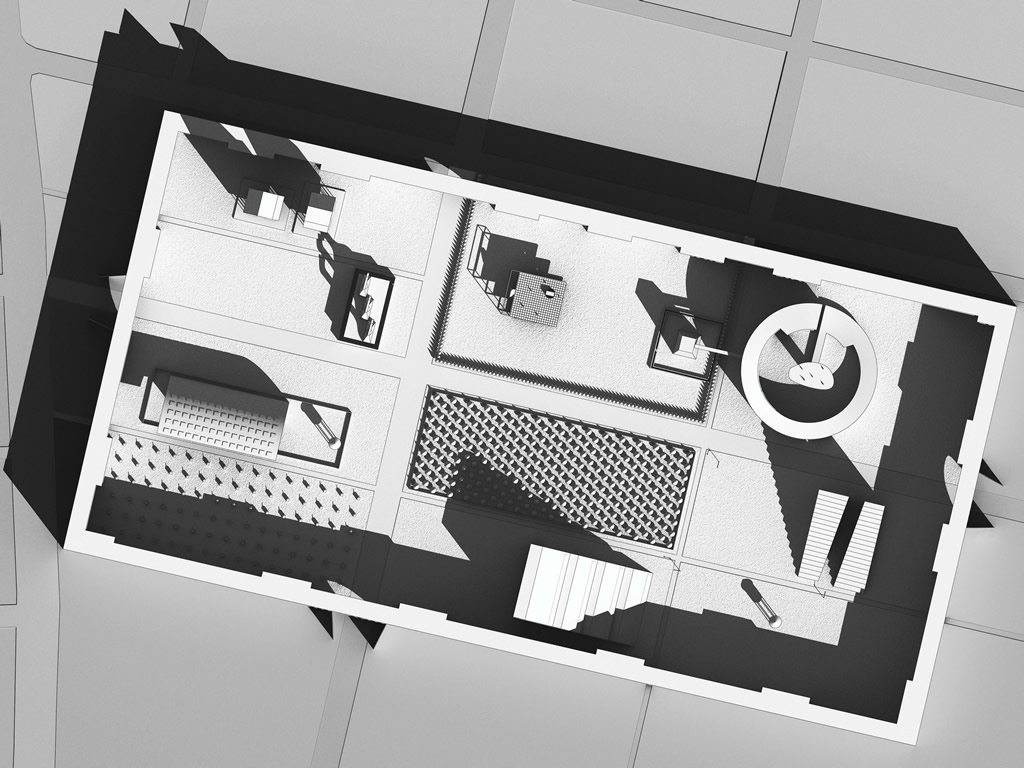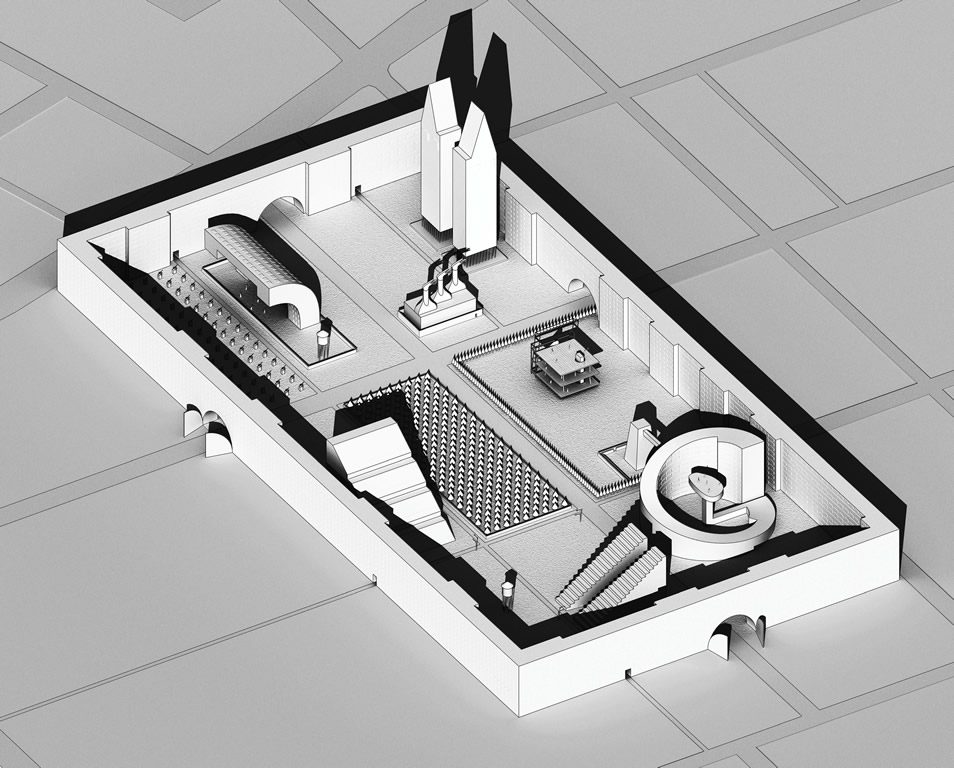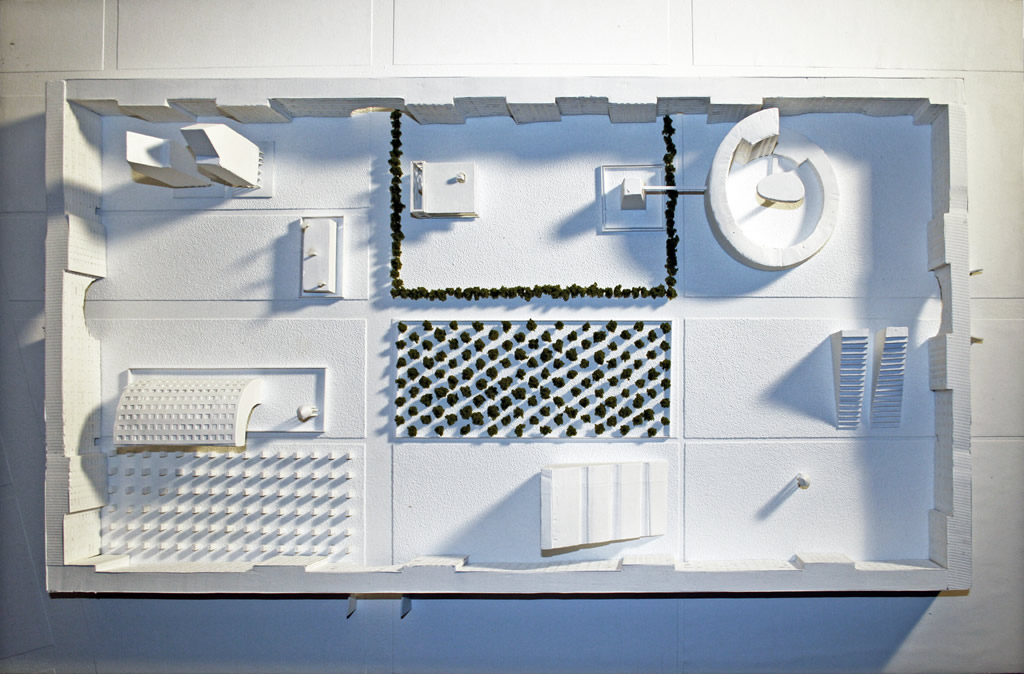
Retelling
at UIC School of Architecture
w/critics Sam Jacob and Grant Gibson
This project was selected for the 2012 Year End Show at UIC School of Architecture and nominated for the Schiff Foundation Fellowship.
In 1977, Charles Jenks joyously announced “Modern architecture died in St. Louis, Missouri on July 15th, 1972…boom, boom, boom.” After only two decades of occupancy, the first tower of the Pruitt-Igoe housing project in St. Louis, Missouri was dramatically imploded in a now notorious image of dust, smoke, and debris. For Jenks, that moment of implosion signified the death of modernism and out of the rubble post-modernism emerged.
As the 40th anniversary of that day in July approaches, this project began with the task of forensically reconstructing the life, death, and after-life of Pruitt-Igoe. To begin, various modes of re-enactment and the resulting narrative and physical forms were catalogued and then re-applied in new (or not so new) ways. By re-staging the past in the present, history becomes a contemporary tool. Through the methodology of re-enactment, a proposal for new architectural possibilities are contemplated and applied to the former Pruitt-Igoe site in St. Louis, Missouri.
“Re-Telling” began with an in-depth investigation into the stories, both well-known and obscure, of Pruitt-Igoe, before, during, and after the housing project itself. These stories tell of the clearing of the Irish slums, they make promises for a housing project that would “not only save people, but money as well,” and then in the end, loudly proclaim that “public housing makes animals out of people.” The perceptions and myths that emerged out of this research were mined for a collective anecdotal history that would serve as the referential basis for figural architectural experimentation.
From this investigation, details concerning events, programs, and form were appropriated to conduct figural on-site explorations. These explorations surreptitiously recall tenets of modernism along with those few elements still remaining within the urban forest that is the site’s current condition. These figural expressions literally re-act to, and re-form their particular histories to register past events and project possible future ones.
The accumulation of these figural characters and their new stories forms a narrative landscape that attempts to architecturally re-tell the story of Pruitt-Igoe.






